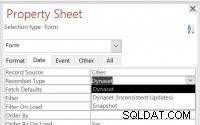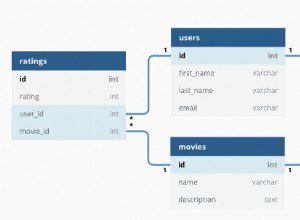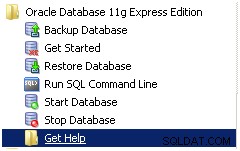Je ne dirai pas grand-chose sur l'efficacité car je ne l'ai pas testé par rapport à d'autres méthodes, mais sans avoir de table temporaire, cela semble être une bonne solution.
SELECT COUNT(u.userID) AS total, m.month
FROM (
SELECT 'Jan' AS MONTH
UNION SELECT 'Feb' AS MONTH
UNION SELECT 'Mar' AS MONTH
UNION SELECT 'Apr' AS MONTH
UNION SELECT 'May' AS MONTH
UNION SELECT 'Jun' AS MONTH
UNION SELECT 'Jul' AS MONTH
UNION SELECT 'Aug' AS MONTH
UNION SELECT 'Sep' AS MONTH
UNION SELECT 'Oct' AS MONTH
UNION SELECT 'Nov' AS MONTH
UNION SELECT 'Dec' AS MONTH
) AS m
LEFT JOIN users u
ON MONTH(STR_TO_DATE(CONCAT(m.month, ' 2013'),'%M %Y')) = MONTH(u.userRegistredDate)
AND YEAR(u.userRegistredDate) = '2013'
GROUP BY m.month
ORDER BY 1+1;
Si vous effectuez l'union en fonction d'un format de date, vous pouvez même réduire le travail et la charge de la requête.
SELECT COUNT(u.userID) AS total, DATE_FORMAT(merge_date,'%b') AS month, YEAR(m.merge_date) AS year
FROM (
SELECT '2013-01-01' AS merge_date
UNION SELECT '2013-02-01' AS merge_date
UNION SELECT '2013-03-01' AS merge_date
UNION SELECT '2013-04-01' AS merge_date
UNION SELECT '2013-05-01' AS merge_date
UNION SELECT '2013-06-01' AS merge_date
UNION SELECT '2013-07-01' AS merge_date
UNION SELECT '2013-08-01' AS merge_date
UNION SELECT '2013-09-01' AS merge_date
UNION SELECT '2013-10-01' AS merge_date
UNION SELECT '2013-11-01' AS merge_date
UNION SELECT '2013-12-01' AS merge_date
) AS m
LEFT JOIN users u
ON MONTH(m.merge_date) = MONTH(u.userRegistredDate)
AND YEAR(m.merge_date) = YEAR(u.userRegistredDate)
GROUP BY m.merge_date
ORDER BY 1+1;
DEMO en direct des deux requêtes.




